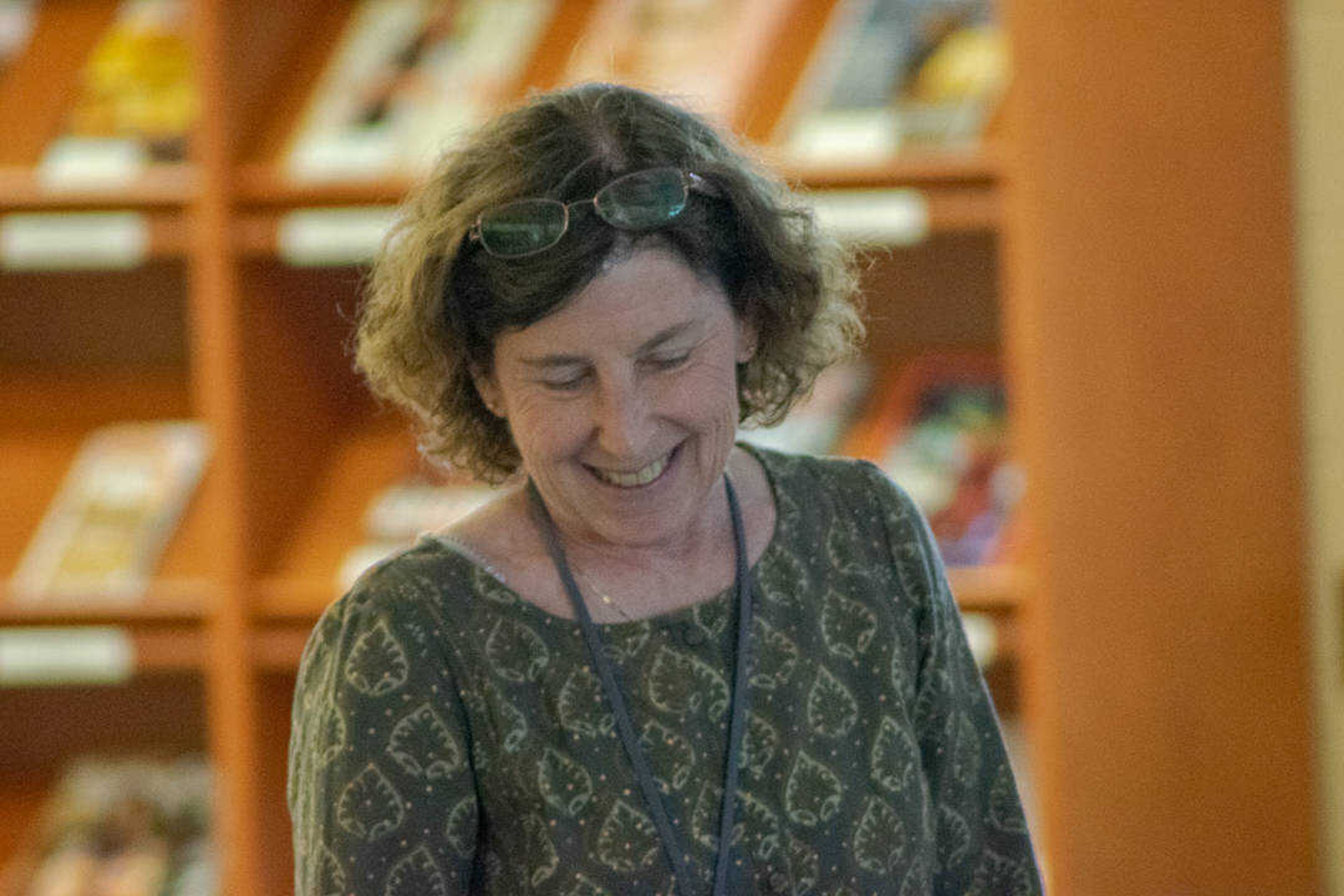At Kent Library’s first Athenaeum lecture of the fall semester, professor of physics Peggy Hill guided listeners one small step closer to a better understanding of the giant leap in technology leading up to the 1969 moon landing.
Titled “To the Moon … and Beyond!” the hour-long lecture detailed the events leading up to Neil Armstrong’s first steps, focusing especially on technological advances and the social impact of the moon landing.
Though Hill found herself giving a lecture over 50 years later, the Apollo mission was hardly on her radar in 1969.
“I was just starting high school. I remember boys, I remember parties,” Hill said. “It wasn’t until much, much later that the whole importance and the amazingness of this moon landing dawned on me.”
To demonstrate this, Hill began with a story of her first TI-55 calculator, which was gifted by her father the same year as the first moon walk. From innovations in space suits to developing rocket technology, Hill kept advancements in the context of everyday technology, such as calculators and television.
Hill highlighted both Russian and American attempts at space travel, emphasizing the competitiveness of what she called the “Rocket Race.”
Hill said the American space program felt threatened by Sputnik 1 — the first satellite launched by Russia in the late 1950s. NASA responded with satellite Explorer 1, which Hill said Russians called “the stay-put-nik.”
She said the 1969 landing was the result of a series of failures — and successes — from both countries. While Russia was also the first country to send a man into space, Armstrong was the first man to walk on the moon.
Hill used original newscasts and footage to demonstrate the immediate impact of space missions and the American moon landing. Hill said Kennedy’s 1961 broadcasted speech to Congress especially caught American’s attention. At the time, Hill said television was the primary means of news delivery, so she felt that watching the president address the space race was even more important.
She explained her dad’s interest in the moon landing helped solidify her interest in space exploration.
Athenaeum committee co-chair John Baken said the topic was chosen following the 50th anniversary of the moon landing earlier this summer. Baken said Hill, who has a doctorate in molecular science from Southern Illinois University, was chosen based on her professional knowledge of the event.
Community member Carol Brinkopf said she remembers how it felt to witness the out-of-this-world mission.
“Before, we had always viewed the moon rather romantically, the man in the moon concept,” Brinkopf said. “Here, we were bringing science to our picture of the moon. It was more than something songwriters would use in a lyric. It was real.”
Kent Library hosts four lectures throughout the fall semester. The next lecture “Old McKendree and 200 years of Methodism in Cape Girardeau Country” will be Sept. 25 featuring Mary Harriet Talbut, who will speak about the 200th anniversary of the Old McKendree Chapel in Jackson.






